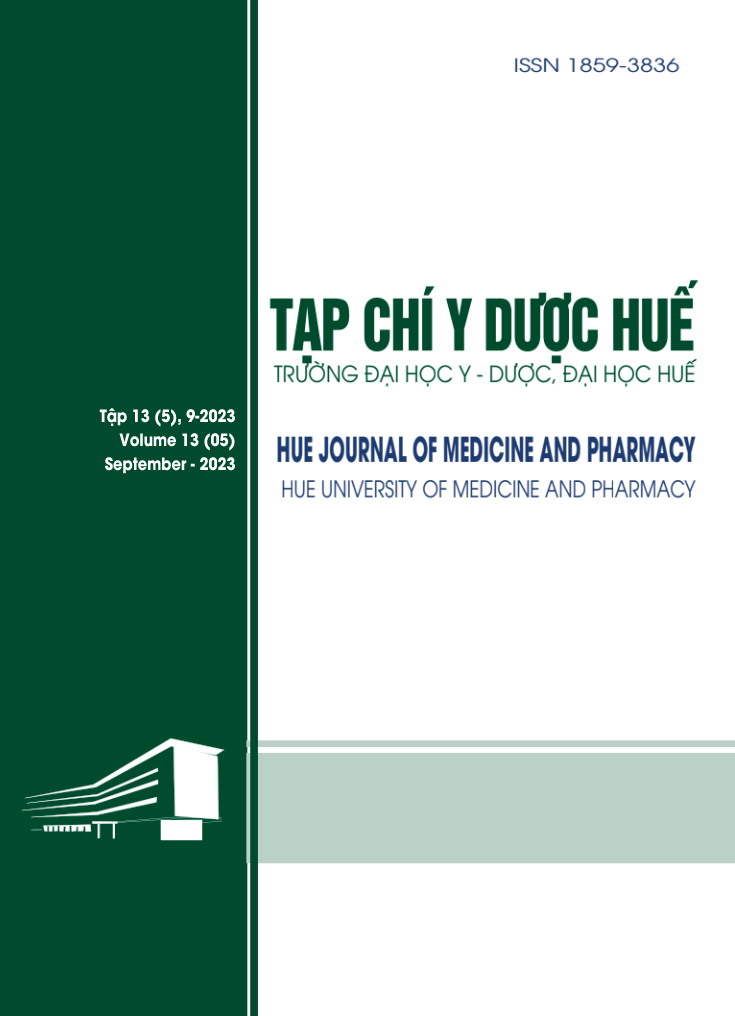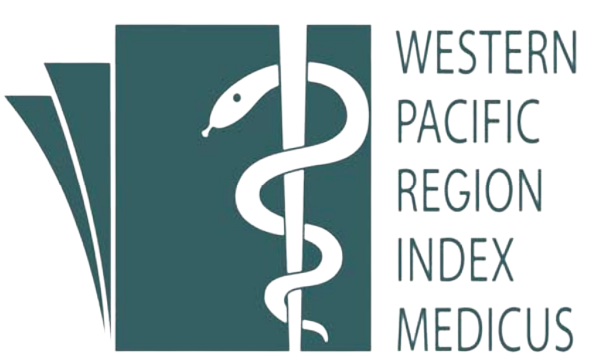Abstract
Objective: Initially study of diagnostic and prognostic role of serum EBV-DNA in nasopharyngeal carcinoma. Materials and methods: Studied in 39 nasopharyngeal carcinomas, treated at Hue Central Hospital and Danang Oncology Hospital from 01/2021 to 07/2022. All patients were evaluated serum EBV-DNA by Realtime-PCR before and 1 month post-treatment, evaluated response by RECIST 1.1 criteria 3 months post-treatment. Cut-off score of serum EBV-DNA pre-treatment was 1500 copies/ml, and post-treatment was 0 copy/ml. Results: Mean age was 46.6 ± 15.4. Rate of stage IV, III were 38.5% and 35.9% respectively. Levels of serum EBV-DNA pre-treatment was higher than post-treatment, p < 0.001: 16888.6 ± 2 0037.8 copies/ml (0 - 97500 copies/ml) and 490.3 ± 1785.6 copies/ml (0 - 10700 copies/ml). There was relation between serum EBV-DNA and stages of tumor, lymph nodes, metastasis, clinical stages and treatment outcomes: The later stage at diagnosis was, the higher serum EBV-DNA levels. Patients with negative post-treatment serum EBV-DNA obtained better tumor, lymph node response than positive post-treatment serum EBV-DNA patients. Conclusions: Pre- and post-treatment serum EBV-DNA level was a value in diagnosis, prognosis and following-up to nasopharyngeal carcinomas. Level of the pre-treatment serum EBV-DNA took a part in cancer status, while the post-treatment serum EBV-DNA was an early prognostic factor of treatment response.| Published | 2023-09-01 | |
| Fulltext |
|
|
| Language |
|
|
| Issue | Vol. 13 No. 5 (2023) | |
| Section | Original Articles | |
| DOI | 10.34071/jmp.2023.5.1 | |
| Keywords | nasopharyngeal carcinoma, EBV-DNA, prognosis. ung thư vòm, EBV-DNA, tiên lượng. |

This work is licensed under a Creative Commons Attribution-NonCommercial-NoDerivatives 4.0 International License.
Copyright (c) 2023 Journal of Medicine and Pharmacy
Alami I.E. et al (2022), “Prognostic value of Epstein-Barr virus DNA load in nasopharyngeal carcinoma: a meta-analysis”, Pan Afr Med J, 41(6), pp. 2-17.
Chan K.C. (2014), “Plasma Epstein-Barr virus DNA as a biomarker for nasopharyngeal carcinoma”, Chin J Cancer, 33(12), pp. 598-603.
Chan K.C. et al. (2017), “Analysis of Plasma Epstein-Barr Virus DNA to Screen for Nasopharyngeal Cancer”, N Engl J Med, 377(6), pp. 513-522.
Chan A.T. et al (2004), “Phase II study of neoadjuvant carboplatin and paclitaxel followed by radiotherapy and concurrent cisplatin in patients with locoregionally advanced nasopharyngeal carcinoma: therapeutic monitoring with plasma Epstein-Barr virus DNA”, J Clin Oncol, 22(15), pp. 3053-3060.
Jia W.H. and Qin H.D. (2012), “Non-viral environmental risk factors for nasopharyngeal carcinoma: a systematic review”, Semin Cancer Biol, 22(2), pp. 117-126.
Hong R.L. et al. (2004), “Comparison of clinical and molecular surveillance in patients with advanced nasopharyngeal carcinoma after primary therapy: the potential role of quantitative analysis of circulating Epstein-Barr virus DNA”, Cancer, 100(7), pp. 1429-1437.
Hou X. et al (2011), “Different clinical significance of pre- and post-treatment plasma Epstein-Barr virus DNA load in nasopharyngeal carcinoma treated with radiotherapy”, Clin Oncol (R Coll Radiol), 23(2), pp. 128-133.
Hsu C.L. et al (2012), “Plasma Epstein-Barr virus DNA concentration and clearance rate as novel prognostic factors for metastatic nasopharyngeal carcinoma”, Head Neck, 34(8), pp. 1064-1070.
Lee V.H. et al (2017), “Prognostication of serial post-intensity-modulated radiation therapy undetectable plasma EBV DNA for nasopharyngeal carcinoma”, Oncotarget, 8(3), pp. 5292-5308.
Lertbutsayanukul C. et al (2018), “Optimal plasma pretreatment EBV DNA cut-off point for nasopharyngeal cancer patients treated with intensity modulated radiation therapy”, Jpn J Clin Oncol, 48(5), pp. 467-475.
Li W. et al (2021), “Integrating pre- and post-treatment Plasma Epstein-Barr Virus DNA levels for better prognostic prediction of Nasopharyngeal Carcinoma”, J Cancer, 12(9), pp. 2715-2722.
Lin J.C. et al (2004), “Quantification of plasma Epstein-Barr virus DNA in patients with advanced nasopharyngeal carcinoma”, N Engl J Med, 350(24), pp. 2461-2470.
Lin J.C. et al (2007), “Long-term prognostic effects of plasma epstein-barr virus DNA by minor groove binder-probe real-time quantitative PCR on nasopharyngeal carcinoma patients receiving concurrent chemoradiotherapy”, Int J Radiat Oncol Biol Phys, 68(5), pp. 1342-1348.
Peng H. et al (2016), “Survival analysis of patients with advanced-stage nasopharyngeal carcinoma according to the Epstein-Barr virus status”, Oncotarget, 7(17), pp. 24208-24216.
Qu Hongling et al (2020), “Prognostic value of Epstein-Barr virus DNA level for nasopharyngeal carcinoma: a meta-analysis of 8128 cases”, Eur Arch Otorhinolaryngol, 277(1), pp. 9-18.
Phạm Huy Tần (2018), Nghiên cứu đặc điểm lâm sàng, cận lâm sàng và định lượng nồng độ EBV-DNA huyết tương trong ung thư Vòm Mũi Họng, Luận án tiến sỹ Y học, Trường Đại học Y Hà Nội.
Wong K.L el al (2022), “Review of functional magnetic resonance imaging in the assessment of nasopharyngeal carcinoma treatment response”, Precision Radiation Oncology, 6(2), pp. 177-185.
Zhao F.P. et al (2015), “Levels of plasma Epstein-Barr virus DNA prior and subsequent to treatment predicts the prognosis of nasopharyngeal carcinoma”, Oncol Lett, 10(5), pp. 2888-2894.






